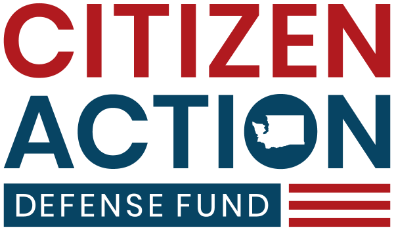
If you are shocked—shocked!!—at all that transpired at Seattle’s Cal Anderson Park the weekend before last, you are either new to the Pacific Northwest or otherwise blissfully ignorant of its long, checkered history of useless, and frequently obnoxious, protests. As a new-ish (and Jewish) Evergreener myself, I have had the great misfortune of receiving a crash course on the subject. I have kept close track of the waves of antifa and anti-Israel protests proliferating across the state since 2020 and 2023, respectively—especially around Seattle and Olympia. And my work at the crossroads of Washington law, history, and politics, all-but-guaranteed a deep-dive into these waves’ historical antecedents. Now well-ensconced in this rabbit hole, I find myself—like Bob Seger—“wish[ing] I didn’t know now what I didn’t know then.”
Before I became a naturalized Washingtonian in 2020, I had a vague sense of the PNW’s, shall we say . . . checkered protest history. I knew of the 1999 WTO protests—what “veterans” still call the “Battle in Seattle”—but not much more than the bare essentials, including how utterly quixotic the whole affair had been. Fast-forward a couple decades to the “Capitol Hill Autonomous Zone,” a self-declared proto-city-state in the center of Seattle, free of police but rife with crime—and the parallels are uncanny. Windows smashed, cars set alight, graffiti everywhere. And all amounting to one big nothing. In light of this history, is no coincidence that the creators of The Last of Us—an acclaimed (ugh) video game set amidst a fungi-fueled zombie apocalypse (yes, you read that right) would make Seattle the epicenter for the most insufferable of the countless rebel insurgencies fighting a rump-federal government still hobbling along decades into the mushroom-induced chaos. First, that is a sentence I never expected to write. Second, I fear, dear reader, that I am veering too far off course.
Let’s return to the weekend before last, shall we? What we saw—as in the Seattle of 1999 and a future fiction—were our fellow Washingtonians at their near-worst, fighting perceived intolerance with . . . intolerance. Whatever one thinks of the evangelical gathering in Cal Anderson Park on May 24, 2025—Mayor Bruce Harrel called it part of an “extreme right-wing national effort to attack our trans and LGBTQ+ communities,” and some of their rhetoric certainly does not help their case,” freedom of speech is a Manichean proposition. Either we tolerate it totally or not at all. Hence has the U.S. Supreme Court long interpreted the First Amendment to prohibit conditioning permits for public events on anything other than content-neutral factors like “time, place, and manner.” This means, for example, that local officials can deny applicants a permit to stage a protest in the middle of the night, or inside government buildings. There are close cases, of course—though even a neo-Nazi march through an Illinois neighborhood with a large population of Holocaust survivors was deemed “permissible” under the time-place-and-manner test. (Even as a civil libertarian I have a real hard time concurring with that ruling.) From this purely—but crucially—constitutional perspective, even an explicitly anti-LGBTQ gathering in the middle of a gay neighborhood would be protected (if reproachable) speech. As were, for example, the shenanigans of the notorious Westboro Baptist Church, whose small membership during the Iraq War infamously picketed American troops’ funerals with signs reading “Thank God for Dead Soldiers.”
While the First Amendment only prohibits the government from imposing content-based restrictions on public protests, this by no means implies that individual Americans have license to respond to even violent rhetoric with violent action. As a Jew and a Zionist, I am nowadays keen to the dread that shadows nearly every event in my community. I would, at the same time, fight tooth-and-nail to protect an idiot’s right to shout that “the only good Zionist is a dead Zionist!” Provided their conduct does not create a clear and present danger of imminent physical harm—e.g., pointing at a Jewish passerby and directing your audience to attack—the principle of free speech demands our (extremely reluctant) toleration. If we as a civil society lose sight of this, it becomes gradually easier for governments—with their monopolies on violence—to pick and choose who can and cannot speak. So we tolerate the expression of bad, even unpopular ideas, lest officials are empowered to make those decisions for us. And that never ends well.
Imagine my chagrin, then, when residents of a city which prides itself on a history of what we might (charitably) call “quirky” protest movements, reacted to the interloping rallygoers with far more than hoots and hollers, or even pointed non-attention. Instead, those gathered in Cal Anderson Park to fight “demonic forces” were met with a barrage of violence ranging from thrown objects to fisticuffs. Granted, this was not the most drastic protest-turned-fracas, even in recent memory. But from a freedom-of-speech standpoint, the City’s response has been, well . . . wanting. Instead of admonishing violent counter-protestors, local officials like Councilmember Bob Kettle argue that the protest should not have been permitted in the first place. This is the wrong tact, of course.
Again, one can condemn—in the sharpest terms—without limiting one’s right to speak condemnable language. Indeed, it is the hallmark of a democratic-republican society, one in which, as sociologist Elias Canetti put it in Crowds and Power (1960), ensures that “the member of an outvoted party”—who could be any of us, one day—“accepts the majority decision, not because he has ceased to believe in his own case, but simply because he admits defeat.” In a society which tolerates intolerance, this “is easy for him to do . . . because nothing happens to him: he is not punished in any way for his previous opposition.” And so it is for our own sake—not theirs—that we tolerate speech with which we disagree or even detest.
Alki,
Sam Spiegelman

